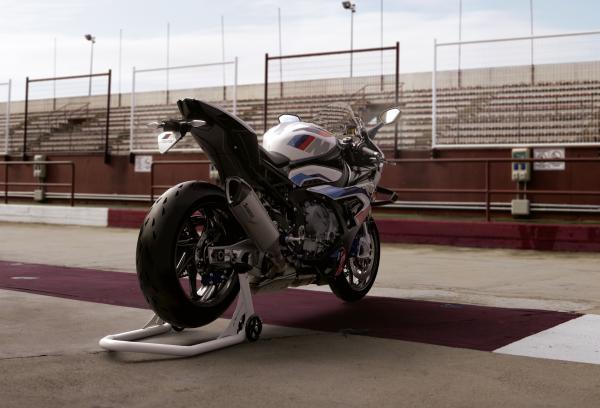
Why don’t manufacturers brag more about their bikes’ 0-60mph times? In the car world, it’s common practice – virtually every new motor, from humdrum hatchbacks to spicey supercars, lists a 0-100kmh (62mph) time in its spec sheet and/or a 0-62mph time. But given we all know that even an average middleweight motorcycle will wipe the floor with any car this side of a Sultan’s lockup, why don’t we hear more about 0-60mph times in the bike world?
Let’s start at the beginning. The 0-to-60mph concept is credited to American car journalist Tom McCahill in the 1950s. It soon gained popularity as a simple, blunt shorthand for a vehicle’s speed and performance, and over the years we’ve come to associate faster 0-60mph times with either more power or a better power-to-weight ratio. But with modern bikes, that isn’t always the case. To prove it, let’s look at two dramatically different designs: the BMW M1000RR and the Triumph Rocket 3 R.
BMW’s M1000RR is one of the highest-performance road-legal litre superbikes ever built. It makes 209bhp and has a kerb weight of 192kg, giving a power-to-weight ratio of a ludicrous 1089bhp/tonne.
Triumph’s Rocket 3 R is a 2.5-litre cruiser. It weighs 322kg and makes 165bhp, giving a power-to-weight ratio of 512bhp per tonne – less than half as much as the M1000RR.
But guess which gets off the line faster? The big, heavy cruiser. We know because these are two bikes whose respective manufacturers have declared sprint times. In late 2019 Triumph announced they’d clocked a Rocket 3 R covering 0-60mph in just 2.73s – an all-time internal record for a production Triumph. Meanwhile, BMW is one of few bike brands which does quietly list 0-100kmh times on their bikes’ spec sheets – perhaps a hangover from the car side of their business. For the mighty M1000RR, it’s 3.1 seconds. More power, twice the power-to-weight ratio, yet carbon-fibre loses out to chrome. What gives?
Newton’s second law of motion tells us that acceleration depends on two variables: force and mass. Bikes are light, so they don’t need much force to accelerate blisteringly fast. Take a typical 210kg bike, carrying a typical 90kg of rider. Accelerating that 300kg from 0 to 60mph in three seconds (we’ll spare you the sums) needs around 2700 Newtons of force. In plain English, that’s barely anything. A Suzuki SV650 delivers over 3000 Newtons of thrust in first gear.
So bikes clearly aren’t lacking in shove. What they do lack is the ability to deliver it – and that comes down to two things: grip and wheelies.
Grip tends to be less of an issue in practice. Fairly obviously, the limit is reached when the rear tyre gets fed more torque than there is mechanical grip between rubber and road surface. Traction breaks, the tyre spins, and the motor wastes its effort atomising rubber instead of driving the bike forward. Thankfully, the fixes are simple: fit a sticky tyre, get it hot, and do the run on a grippy surface.
That leaves wheelies, which turn out to be the limiting factor for most modern bikes in 0-60mph sprints. Wheelies are the product of myriad interconnecting physical forces that occur when a motorcycle accelerates hard, plus they look ace. In short, the rear wheel tries to drive below the bike’s centre of mass, and inertia causes it to rotate up and backward. The solutions are to either lengthen the wheelbase/swingarm or to lower the bike, both of which reduce a bike’s willingness to wheelie. Great for 0-60mph times; bad for handling.
That’s why MotoGP bikes have systems that temporarily reduce ride height at the start of a race. That’s why a long, low Triumph Rocket 3 can get off the line quicker than a short, agile M1000RR. And that, in turn, is why bike manufacturers don’t shout about 0-60mph times any more – because once you’re beyond a pretty typical level of performance, they reveal little about a bike’s engine and more about its chassis.

